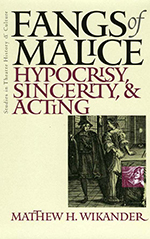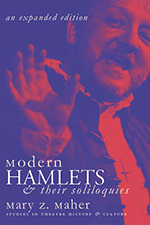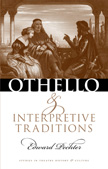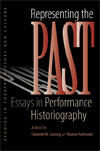Fangs of Malice
“Professor Wikander develops a highly original take on the theme of antitheatricalism into a powerful critical method. Both wise and clever, his absorbing book finds important new things to say about many dramatists, including, almost amazingly, Shakespeare, Molière, and Ibsen.”— Michael Goldman, Princeton University
“Fangs of Maliceis about the age-old suspicion that theatrical mimesis is a kind of lying. The ramifications of this major insight are explored with genuine insight and a range of theatrical knowledge. . . . Shakespeare, Molière, Sheridan, Goldsmith, Rousseau, Ibsen, O'Neill—all prove to be sites of rich interpretive value on the topic of the actor.”—David Bevington, University of Chicago
“This is a superb book: brilliantly and forcefully written, it offers readers a range of knowledges and pleasures and, in addition, is simply pleasurable in itself, a joy to read."— Barbara Hodgdon, Drake University
“Wide-ranging and insightful.”—Michael Caines, TLS
The idea that actors are hypocrites and fakes and therefore dangerous to society was widespread in the seventeenth and eighteenth centuries. Fangs of Malice examines the equation between the vice of hypocrisy and the craft of acting as it appears in antitheatrical tracts, in popular and high culture, and especially in plays of the period. Rousseau and others argue that actors, expert at seeming other than they are, pose a threat to society; yet dissembling seems also to be an inevitable consequence of human social intercourse. The “antitheatrical prejudice” offers a unique perspective on the high value that modern western culture places on sincerity, on being true to one's own self.
Taking a cue from the antitheatrical critics themselves, Matthew Wikander structures his book in acts and scenes, each based on a particular slander against actors. A prologue introduces his main issues. Act One deals with the proposition “They Dress Up”: foppish slavery to fashion, cross-dressing, and dressing as clergy. Act Two treats the proposition “They Lie” by focusing on social dissembling and the phenomenon of the self-deceiving hypocrite and the public, princely hypocrite. Act Three, “They Drink,” examines a wide range of antisocial behavior ascribed to actors, such as drinking, gambling, and whoring. An epilogue ties the ancient ideas of possession and the panic that actors inspire to contemporary anxieties about representation not only in theatre but also in the visual and literary arts.
Fangs of Malice will be of great interest to scholars and students of drama as well as to theatre professionals and buffs.






